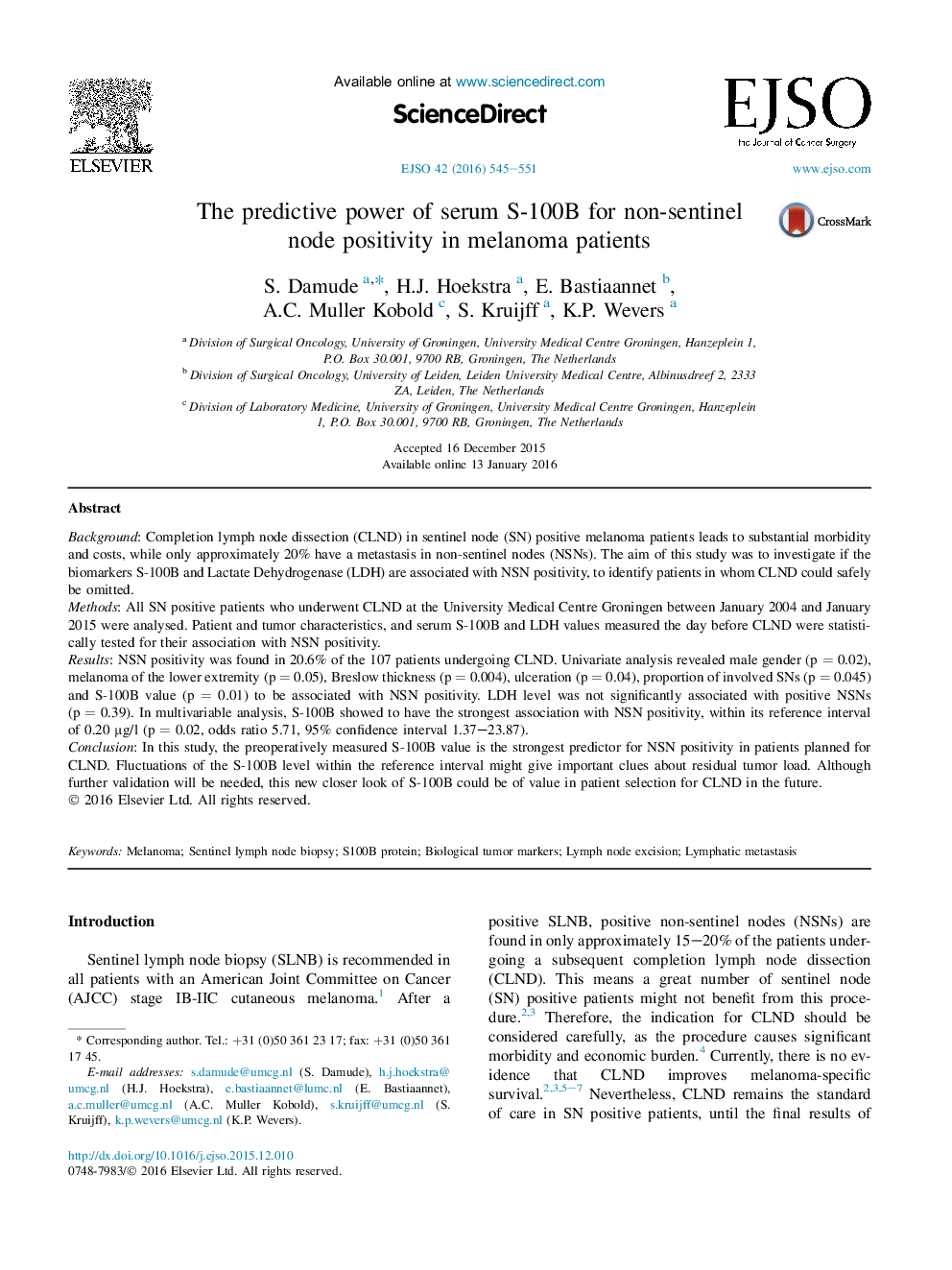| Article ID | Journal | Published Year | Pages | File Type |
|---|---|---|---|---|
| 3984598 | European Journal of Surgical Oncology (EJSO) | 2016 | 7 Pages |
BackgroundCompletion lymph node dissection (CLND) in sentinel node (SN) positive melanoma patients leads to substantial morbidity and costs, while only approximately 20% have a metastasis in non-sentinel nodes (NSNs). The aim of this study was to investigate if the biomarkers S-100B and Lactate Dehydrogenase (LDH) are associated with NSN positivity, to identify patients in whom CLND could safely be omitted.MethodsAll SN positive patients who underwent CLND at the University Medical Centre Groningen between January 2004 and January 2015 were analysed. Patient and tumor characteristics, and serum S-100B and LDH values measured the day before CLND were statistically tested for their association with NSN positivity.ResultsNSN positivity was found in 20.6% of the 107 patients undergoing CLND. Univariate analysis revealed male gender (p = 0.02), melanoma of the lower extremity (p = 0.05), Breslow thickness (p = 0.004), ulceration (p = 0.04), proportion of involved SNs (p = 0.045) and S-100B value (p = 0.01) to be associated with NSN positivity. LDH level was not significantly associated with positive NSNs (p = 0.39). In multivariable analysis, S-100B showed to have the strongest association with NSN positivity, within its reference interval of 0.20 μg/l (p = 0.02, odds ratio 5.71, 95% confidence interval 1.37–23.87).ConclusionIn this study, the preoperatively measured S-100B value is the strongest predictor for NSN positivity in patients planned for CLND. Fluctuations of the S-100B level within the reference interval might give important clues about residual tumor load. Although further validation will be needed, this new closer look of S-100B could be of value in patient selection for CLND in the future.
